-
Follow in Van Gogh’s footsteps in Drenthe

In September 1883 Vincent van Gogh moved from The Hague to Drenthe. Theo had disapproved of Vincent’s relationship with prostitute Sien Hoornik and persuaded him to leave her. Drenthe would inspire him. Just like it had inspired Anthon van Rappard. And he could meet fellow painter Max Liebermann there. To move from The Hague to Drenthe would be like the successful painters Rousseau, Millet and Dupré moving from Paris to Barbizon to paint the beautiful countryside..
It didn’t turn out that way. Vincent missed Sien and her children. Liebermann had already left. Most artists visited beautiful villages like Rolde, Vries, Exloo, Westerbork and Zweeloo in summer. Hoogeveen and Nieuw-Amsterdam in autumn were nothing like that. Van Gogh was lonely and moved to Nuenen 3 months after arrival to live with his parents. But Vincent had fallen in love with the landscape of Drenthe and the people there. The foundation of his painting career?
To follow in Van Gogh’s footsteps in Drenthe is not only about exploring less known locations that he painted. You will discover a little more of Van Gogh’s intense way of observing colors and emotion of the world around him.
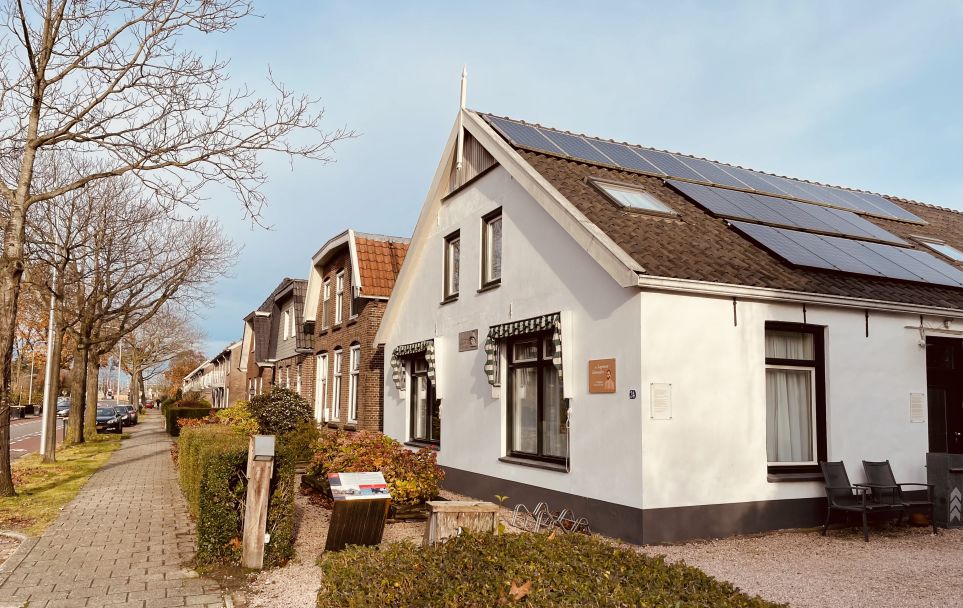
Arrival in Hoogeveen
During the first few weeks in Drenthe Vincent van Gogh stayed at a guest house run by Albertus Hartsuiker at Pesserstraat 24 in Hoogeveen. The house itself doesn’t exist anymore. On this location a new house has been set up as bed and breakfast. Quite a nice idea to stay where Vincent was based, but Drenthe also offers a wide variety of authentic farmhouses to rent.Van Gogh was ready to see the beauty of Drenthe from there: "I think I’ve done well in making Hoogeveen my base. At least it’s nice that I heard on the very first evening that I can go by barge right through the whole peat district as far as the Prussian border and the Zwarte Meer."
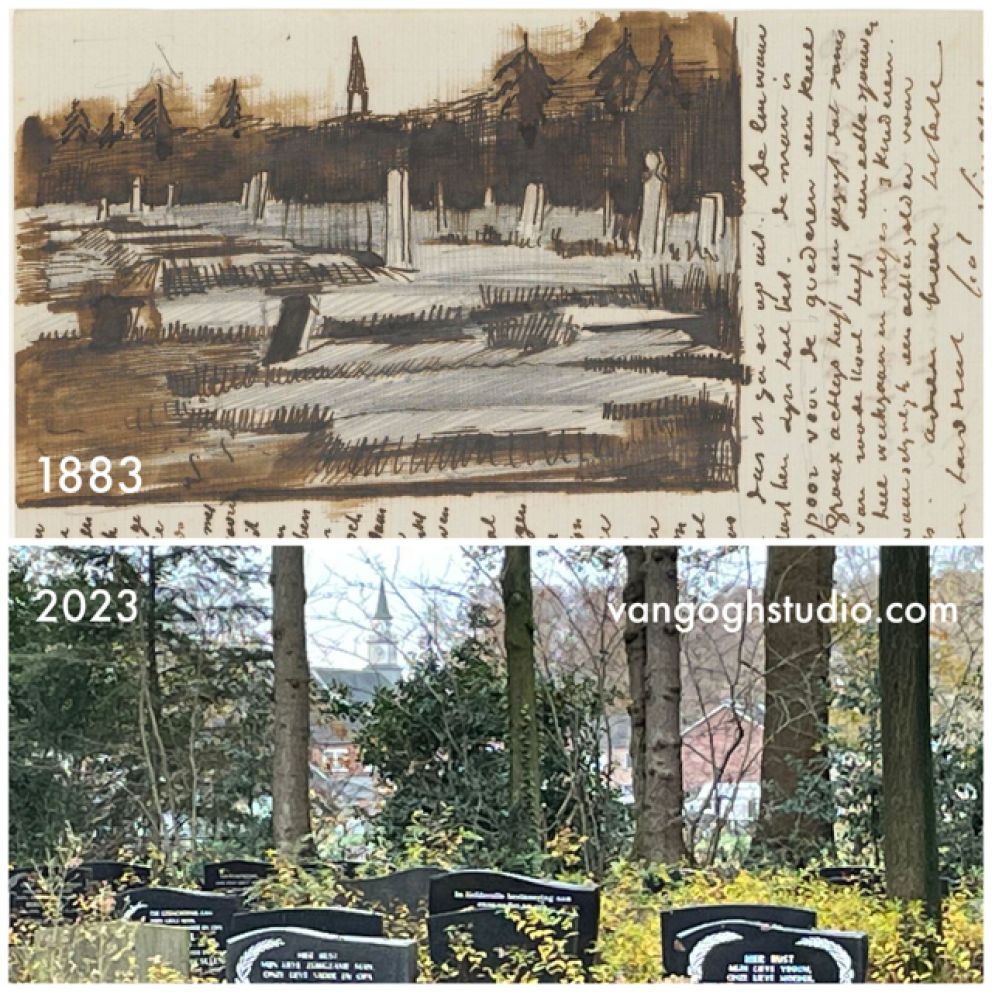
Cemetery Hollandscheveld
Four days after arrival in Hoogeveen Van Gogh made a trip to Hollandsche Veld. He painted the cemetery at the Kerkhoflaan, a subject that symbolized connection between people and nature to him. Unfortunately the painting is lost, but he wrote about it to his brother. And thanks to his accompanying sketch with view from the cemetery on the tower of the church of Hollandscheveld we know the exact spot where he put up his easel."You’ll find the croquis of the little churchyard on the back. The colour there is quite singular. It’s a beautiful sight to see the real heather on the graves, the scent of turpentine has something mystical about it. The dark band of pines that encloses it separates a shimmering sky from the rough ground, which is generally a reddish colour - tawny - brownish - yellowish, but with lilac tints everywhere. It wasn’t easy to paint; I’ll carry on looking for other effects in it."
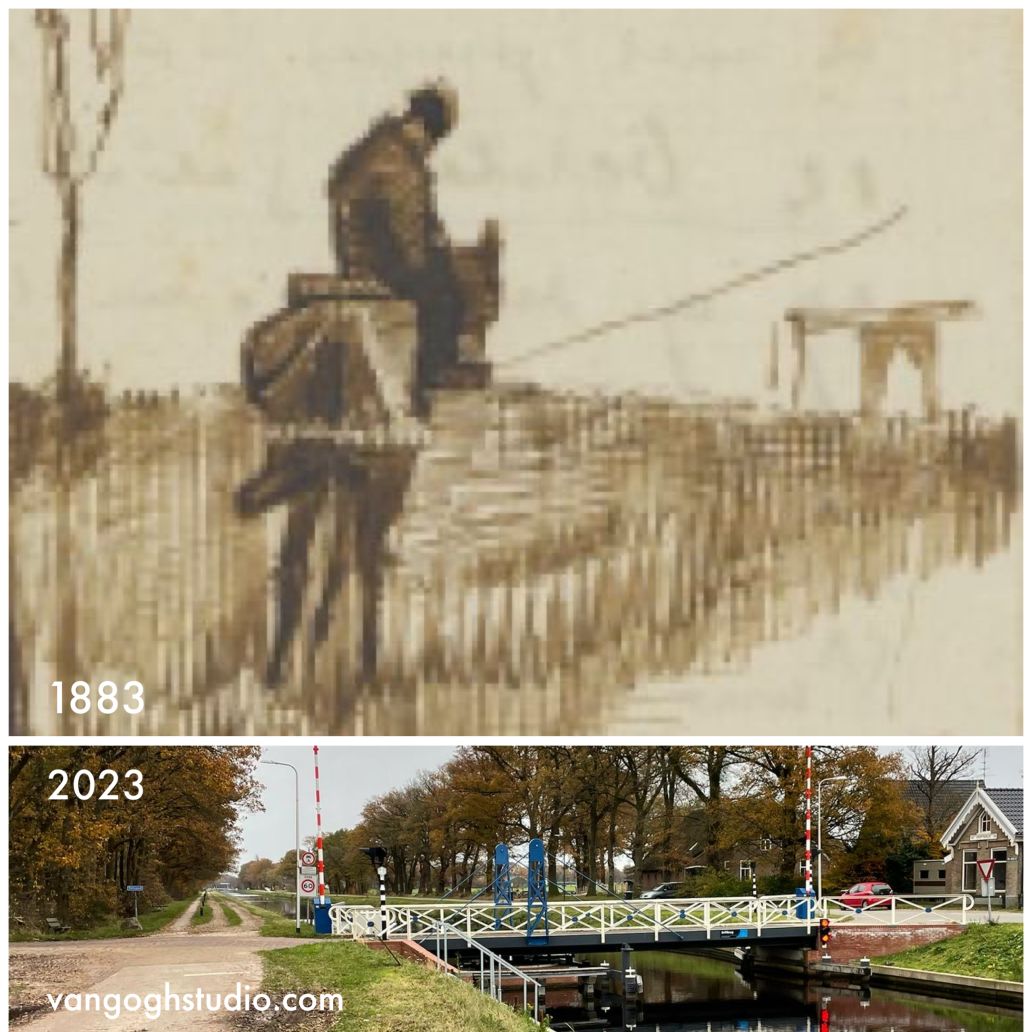
Drift Bridge Zwinderen
When you travel 27 km from Hoogeveen to the East you get to Nieuw-Amsterdam. Van Gogh left Hoogeveen after a few weeks, not entirely happy with his studio. He chose to travel by barge which took him more than 6 hours. At that pace he was able to absorb the overwhelming beauty of the heath and the peat of Drenthe."I see no way of describing the countryside to you as it should be done, because words fail me. But imagine the banks of the canal as miles and miles of Michels or T. Rousseaus, say, Van Goyens or P. de Koninck.”
A sketch in his letter shows one of the "strange hulks of drawbridges profiled against the teeming evening sky” halfway at Zwinderen.
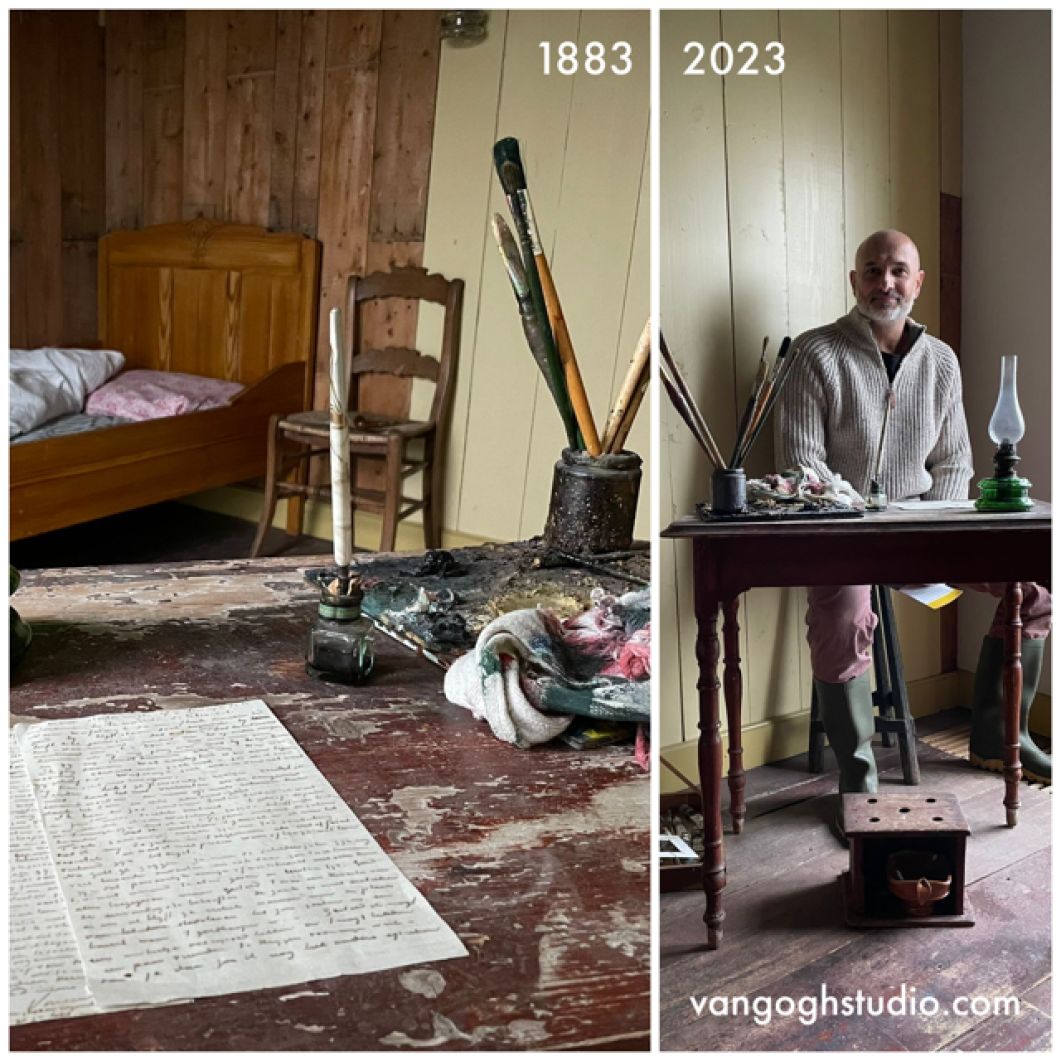
Van Gogh House Drenthe in Nieuw-Amsterdam/Veenoord
Stepping into Vincent's bedroom is a sentimental highlight of following in Van Gogh’s footsteps in Drenthe. It’s wise to book tickets ahead to the Van Gogh House (at Van Goghstraat 1 :) to enjoy a tour. Our guide passionately shared the smallest details about Van Gogh's stay at this former boarding house run by Hendrik Scholte."I now have a reasonably large room where a stove has been placed, where there happens to be a small balcony. From which I can even see the heath with the huts. I also look out on a very curious drawbridge. Well, downstairs is an inn and a peasant kitchen with an open peat fire, very cosy in the evenings. One can think best by one of those peasant hearths with a cradle beside it. If I feel melancholy or can’t work something out, I just go downstairs."
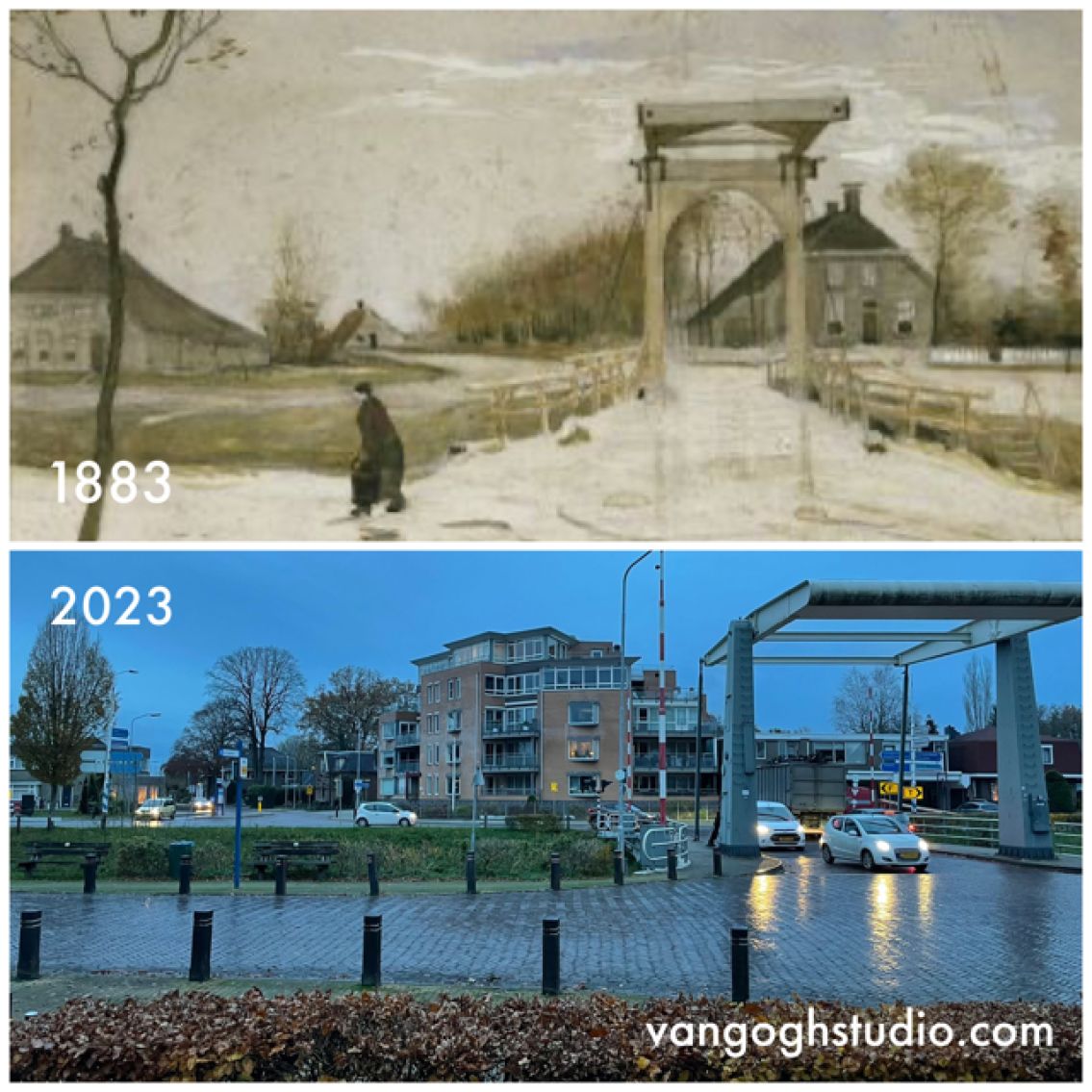
Drawbridge Nieuw-Amsterdam
From his balcony Vincent could see the heathlands, huts and a drawbridge. The bridge has been replaced and moved a little to the right. There are cars now. Houses these days are nice and warm in winter. We also have internet, medicines and social welfare. But would Vincent have found this place now as beautiful as back then..?In 1883 Van Gogh’s painting career had just started. But he had already traveled the world. Vincent had lived in London, Paris and Amsterdam before he started painting. Nature and hard working peasants inspired him more than hectic cities though. That’s what he realized again in Drenthe.
Already in 1874 Van Gogh wrote to his brother: "Always continue walking a lot and loving nature, for that’s the real way to learn to understand art better and better. Painters understand nature and love it, and teach us to see."
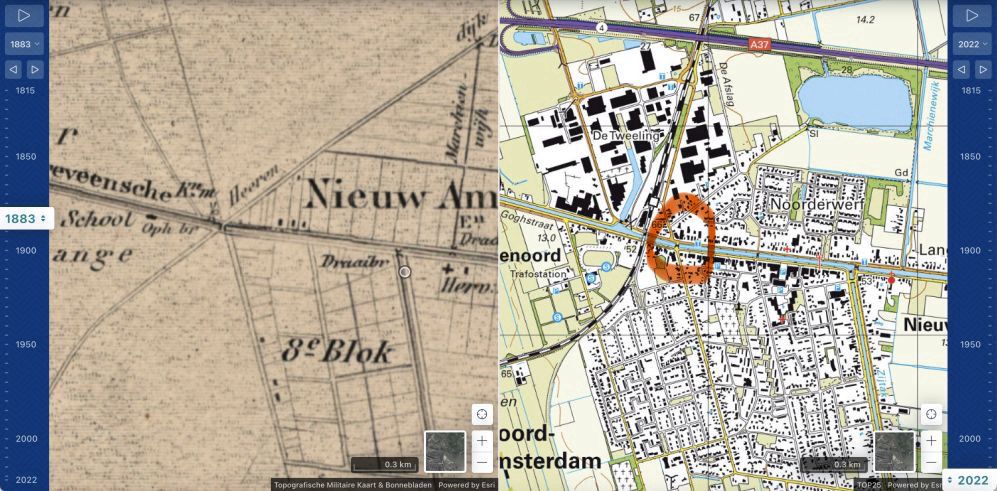
Map drawbridge Nieuw-Amsterdam 1883 and 2022
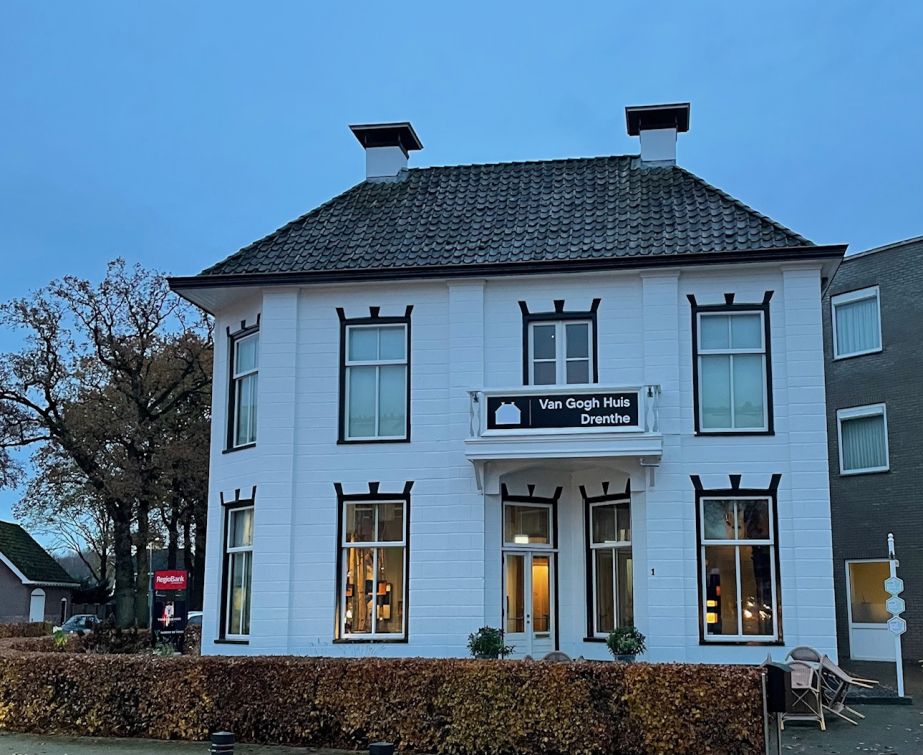
Van Gogh House Drenthe in Nieuw-Amsterdam/Veenoord
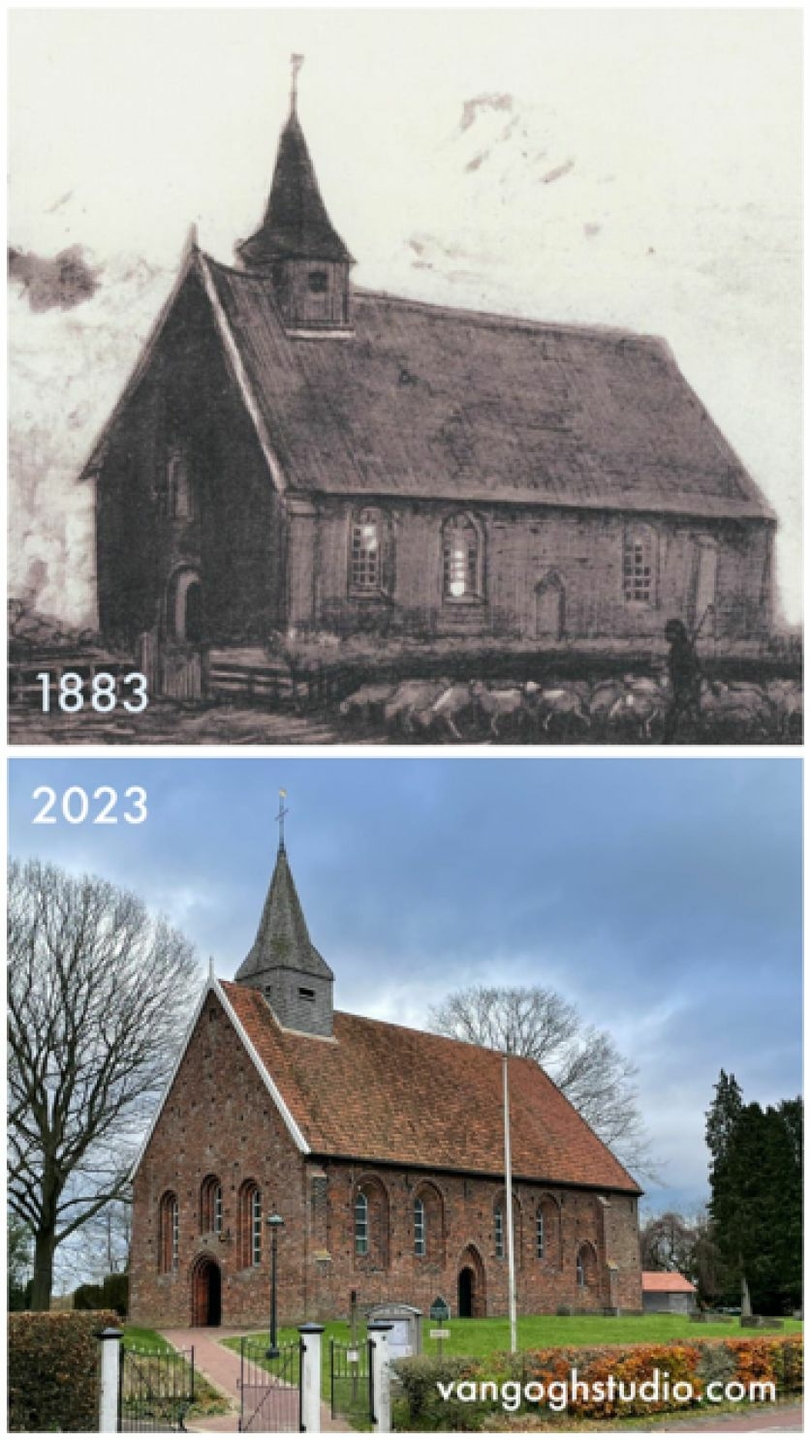
Church at Zweelo
On November 1st Van Gogh traveled from Nieuw-Amsterdam to Zweelo, hoping to meet German painter Max Lieberman. The trip with the lodge owner at 3 o’clock in the morning in an open cart was in darkness. The mysterious and peaceful silence impressed him even more than the trip by barge a few weeks before.Unfortunately Liebermann had left but Van Gogh saw "huge mossy roofs on houses, barns, sheepfolds, sheds and oak trees of a superb bronze. Tones of golden green in the moss, of reddish or bluish or yellowish dark lilac greys in the soil, tones of inexpressible purity in the green of the little wheatfields."
He made a drawing of the 13th century church (De Wheem 10) that reminded him of a church that Millet painted in Normandy, France.
"I passed a little old church, just exactly, just exactly the church at Gréville in Millet’s little painting in the (Musée du, VGS) Luxembourg; but here, instead of the little peasant with the spade in that painting, a shepherd with a flock of sheep came along the hedge."
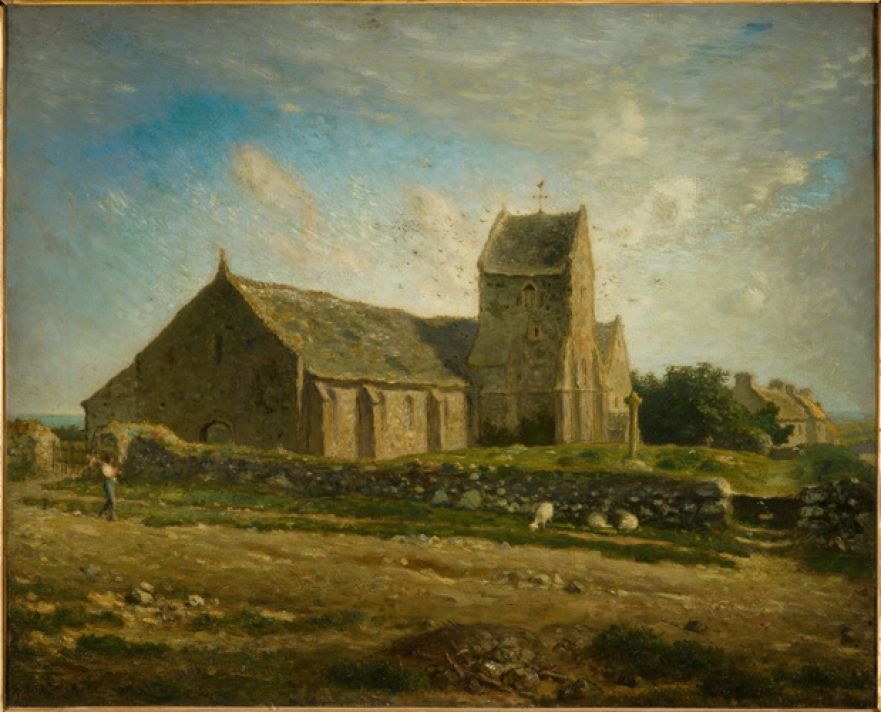
Millet’s 'l’Eglise de Greville’
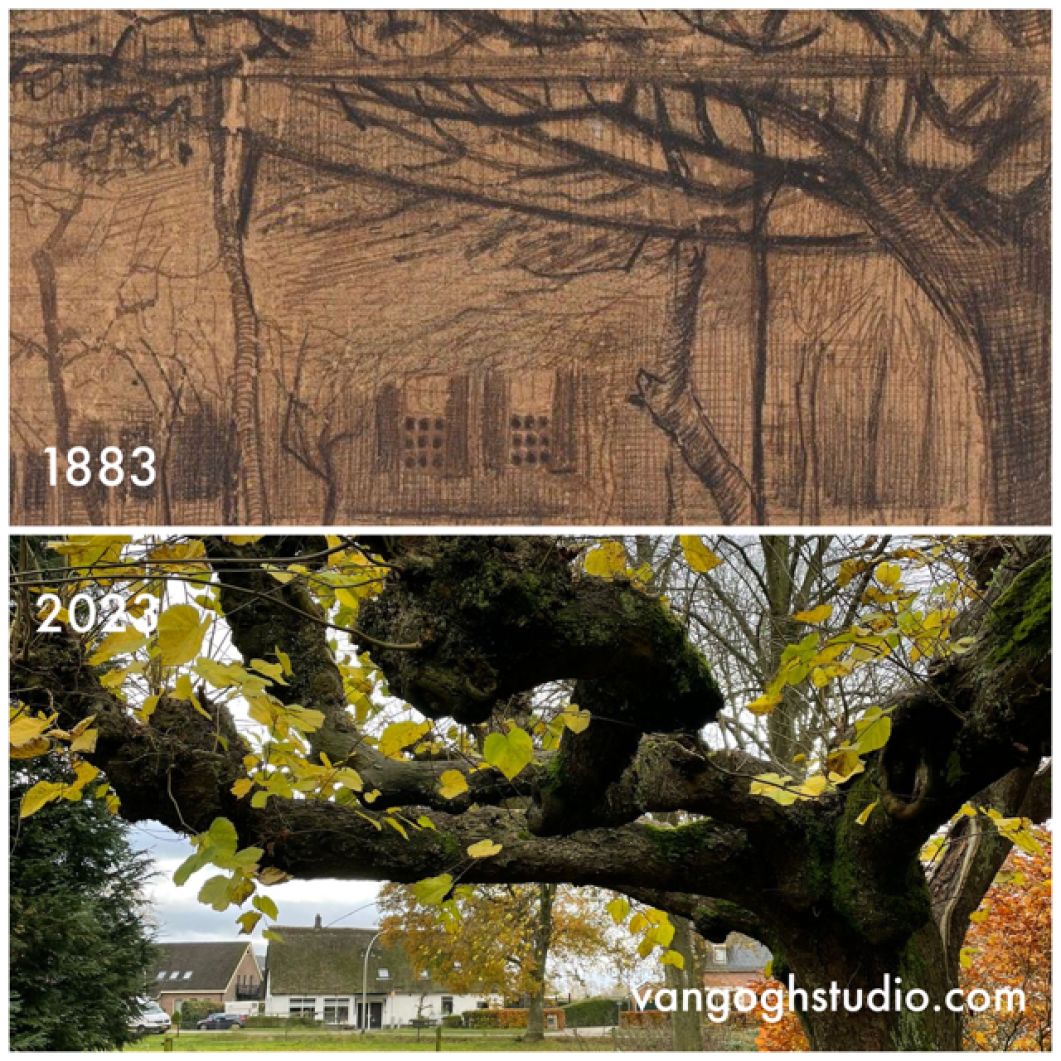
Orchard at Zweelo
As all the painters had left Zweelo before Van Gogh visited this beautiful village, he decided to make a sketch of the very apple orchard that Liebermann painted while waiting for his landlord to return to Nieuw-Amsterdam.Van Gogh’s view on the farmhouse (now at Kruisstraat 5) is a little different than our view. The original orchard has gone, but in the backyard of Bistro Tante Sweel (Hoofdstraat 15), Jan Mensingh’s inn at that time, you’ll find a beautiful lime tree to remember Vincent’s visit.
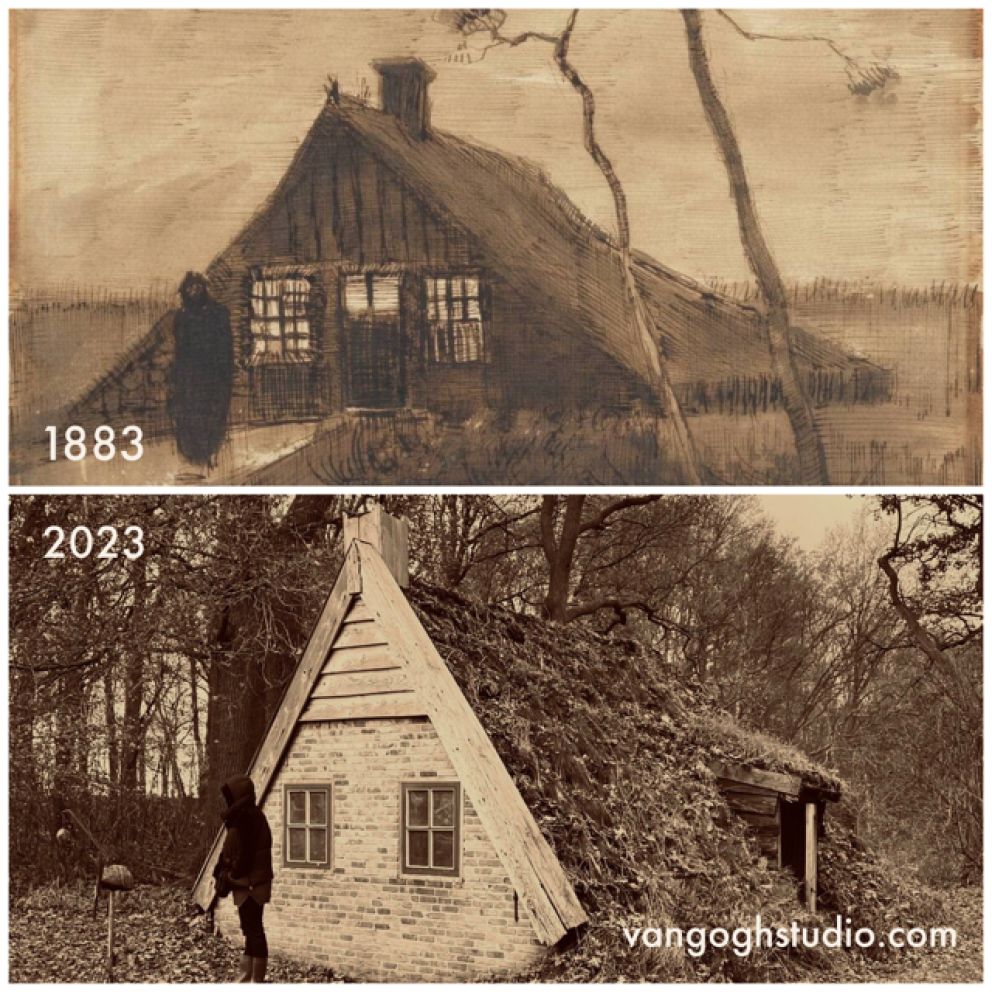
Sod huts in Drenthe
Van Gogh’s water mills in Nuenen have been preserved carefully over time. You can still have a drink at Van Gogh’s cafe terrace in Arles. The church in Auvers-sür-Oise will probably last a long time into the future.But the sod huts (peat sheds) in Drenthe have disappeared. To get an idea of the sober life that the peat workers lived you can visit a replica hut at a 5 minute walk from the Hoogeveenseweg at (Google Maps QH6J+9W), Nieuw Balinge.
"And then, when dusk fell - imagine the silence, the peace of that moment! Imagine, right then, an avenue of tall poplars with the autumn leaves, imagine a broad muddy road, all black mud with the endless heath on the right, the endless heath on the left, a few black, triangular silhouettes of sod huts, with the red glow of the fire shining through the tiny windows, with a few pools of dirty, yellowish water that reflect the sky, where bogwood trunks lie rotting."
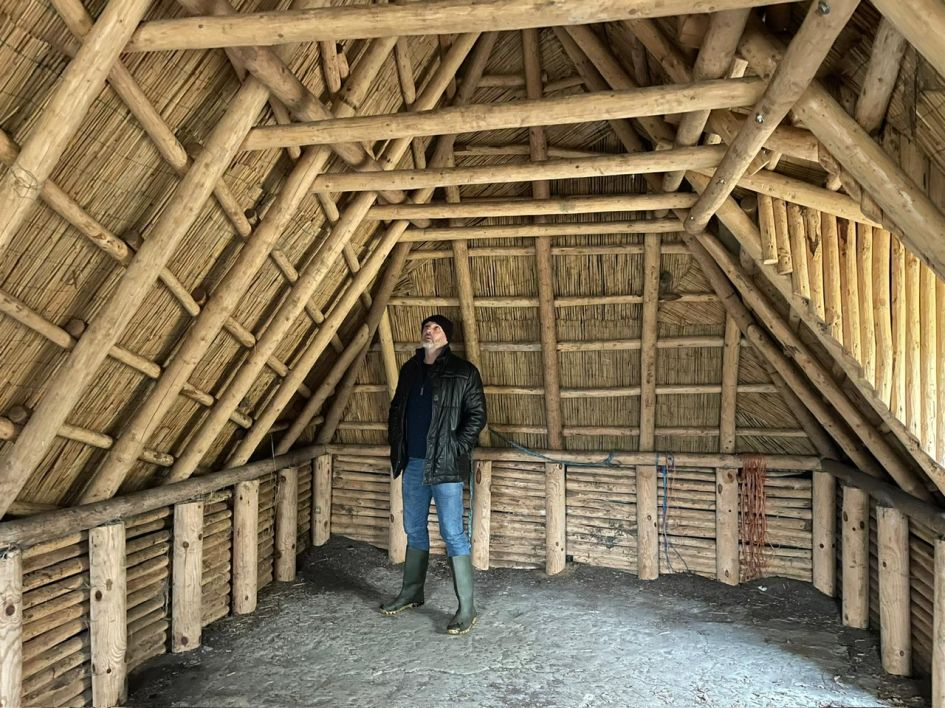
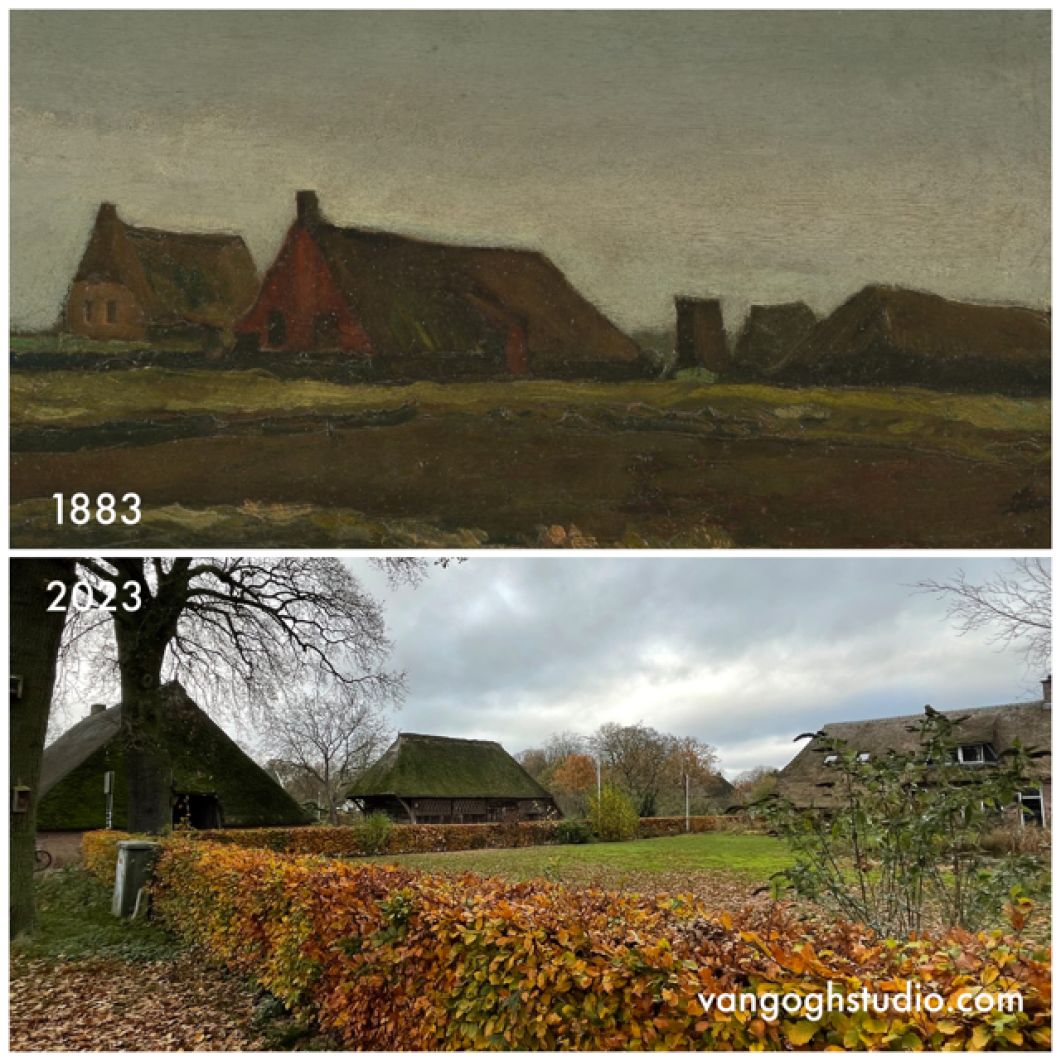
Autumn cottages
Autumn may be somber and dark to some. Van Gogh saw colors. A random shot in the beautiful village of Zweelo at the end of November could be pretty close to what Van Gogh witnessed. Earthy shades of green, brown, grey, red and even blue paint and Van Gogh’s days "passed like a dream, I had been so immersed in that heart-rending music all day that I had literally forgotten even to eat and drink”.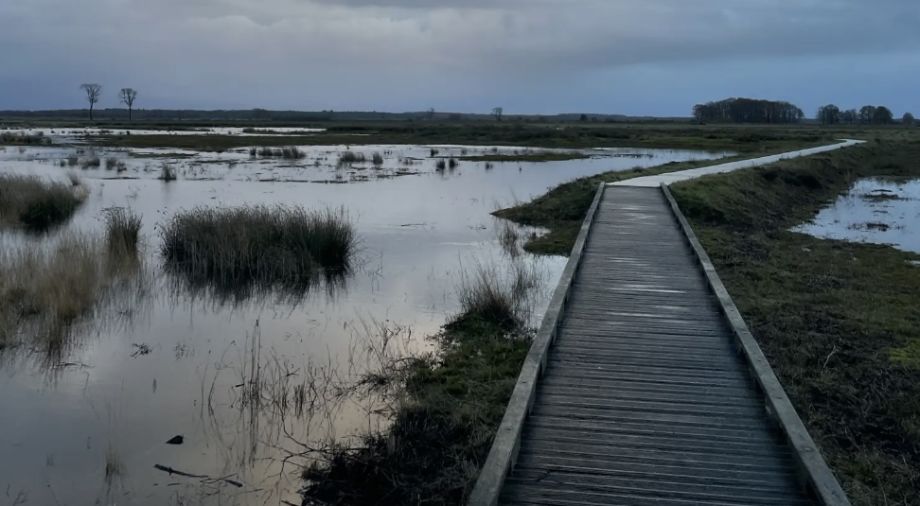
National Park Dwingelderveld
Drente offers 3 national parks. You can take a walk in the largest uninterrupted swathe of wet heath in Western-Europe at less than 2 hours from hectic Amsterdam and feel like wandering around in Van Gogh’s 1883.Like Vincent you may fall in love with Drenthe. And at the same time realize the beauty of good company. In Van Gogh’s case Sien in The Hague and his brother Theo far away in Paris.
"How I wish that we could walk together here and paint together. I believe that the countryside would win you over and convince you. Adieu, I hope that you’re well and will have a bit of good fortune. I thought about you again and again on this trip. With a handshake."
Ever yours, Vincent
You may also like to read:
- Follow in Van Gogh's footsteps in the South of France
- Follow in Van Gogh's footsteps in Nuenen
- Follow in Van Gogh's footsteps in Auvers-sûr-Oise
- Follow in Van Gogh’s footsteps in the Borinage
Your Daily Dose of Van Gogh
What did Vincent van Gogh write on this day?Find out in your FREE Van Gogh e-book.
Hundreds of questions answered by Van Gogh himself!
Mooi Erik! Wat heb jij veel kennis over Van Gogh. Ook het vergelijken van 1883 met 2023 is schitterend.
Thanks Dean! London, Paris, Amsterdam, The Borinage, The Hague, Antwerp.. We're certainly not done yet. Will you follow in his footsteps with us?
Dankjewel Marjan! Op de een of andere manier maken de oorspronkelijke teksten in Oudnederlands het nóg persoonlijker he?
It’s a shame there aren’t more paintings from this period. Van Gogh captured the gloominess and hardship so well. I really enjoy your content, especially the Footsteps series! Will there be more?
Wat een bijzonder verhaal! Ik wist niks van zijn tijd in Drenthe en heb nu zin gekregen om naar het Van Gogh Huis te gaan. De combinatie van de teksten uit de brieven en de beschrijvingen van hoe het nu is maakt het net een teletijdmachine! Super bedankt voor het delen! Groet, Marjan.
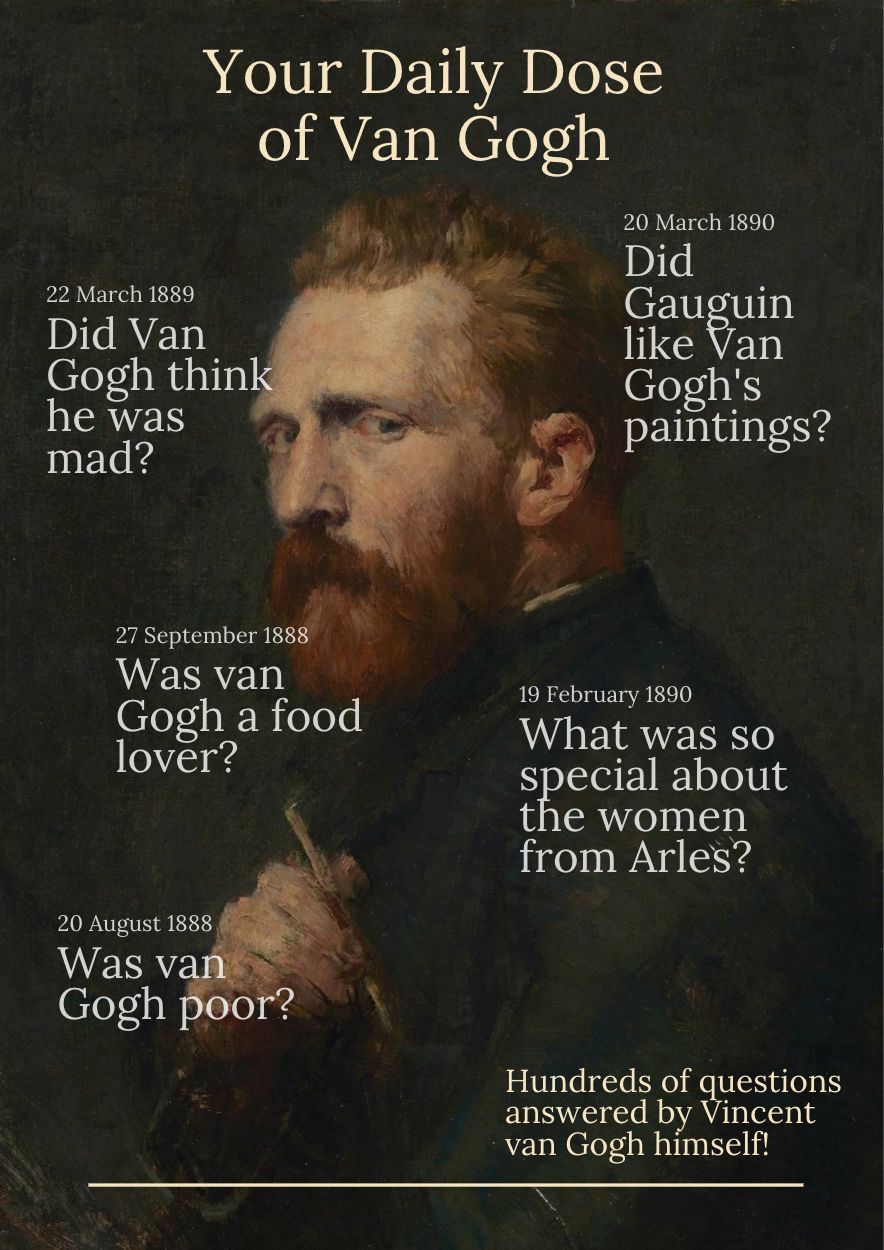
Echt een mooi stuk in de voetsporen van Van Gogh heb je weer gemaakt Erik! Je krijgt zin om erheen te gaan! En natuurlijk ook leuk dat je weer zelf op de huidige foto’s staat 😀